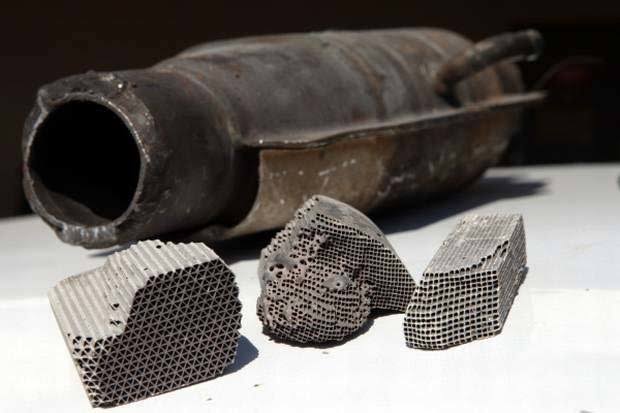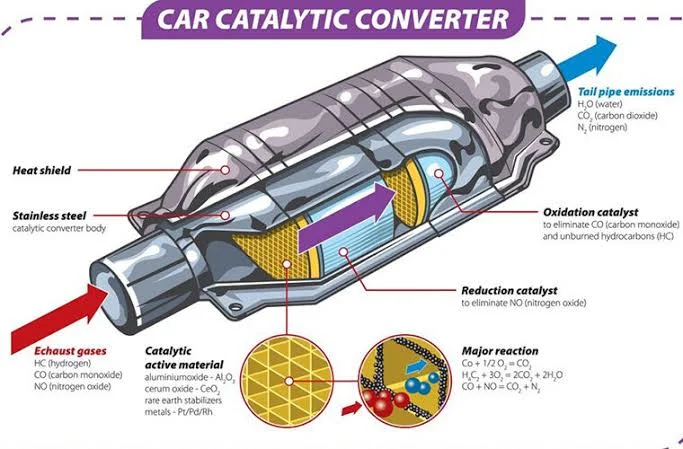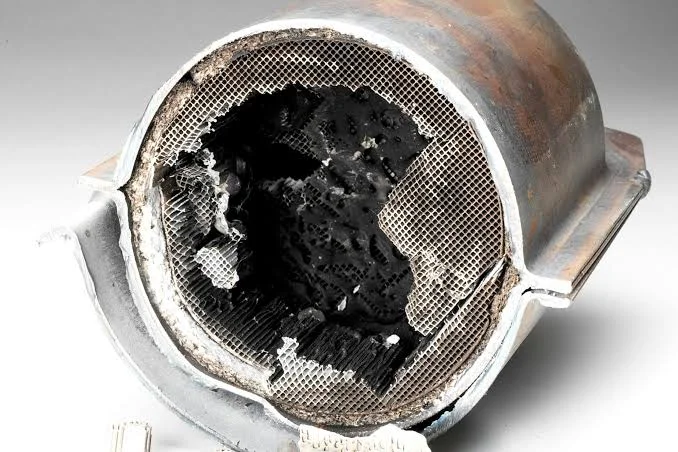Here's a statistic that'll make you think twice about that "cheap" gas station: catalytic converter replacement costs range from $1,000 to $4,200, yet most drivers unknowingly accelerate this expensive failure every time they fuel up with subpar gasoline.
What drivers don't realize is that bad fuel doesn't announce its damage with warning bells. It works silently, methodically poisoning one of your vehicle's most critical emission control components.
"My car runs fine on cheap gas," drivers often tell me. Wrong. While your engine might seem happy today, sulfur compounds and contaminants in low quality fuel are steadily coating precious metal surfaces inside your catalytic converter, reducing its efficiency by up to 40% without you even knowing it.
The Silent Chemistry of Destruction
Your catalytic converter contains platinum, palladium, and rhodium, precious metals that convert harmful exhaust gases into harmless compounds. These metals work by providing surface area where chemical reactions occur. When sulfur from poor quality fuel combusts, it creates sulfur dioxide (SO₂) that competes with exhaust pollutants for space on these active catalyst sites.
Think of it like trying to do surgery with dirty gloves. The surgeon's skills remain the same, but contamination prevents effective work. Sulfur compounds don't permanently destroy your converter like lead used to. Instead, they create a reversible but persistent inhibition that dramatically reduces conversion efficiency.
Research shows this inhibition varies based on several factors: sulfur levels in gasoline, catalyst composition, exhaust temperature, and how you drive. Most catalytic converters are designed to last 70,000 to 100,000 miles, but poor fuel quality can cut this lifespan significantly.
The Top Tier Difference Matters More Than You Think
Not all gasoline is created equal. Top Tier gasoline brands add detergent additives that help prevent deposit buildup, while cheaper alternatives often contain minimal additives. The difference isn't marketing fluff, it's measurable chemistry that affects your converter's performance.
I've witnessed the results firsthand. Vehicles running consistently on non-Top Tier fuel develop carbon deposits that create incomplete combustion. This forces your catalytic converter to work harder, running at higher temperatures and experiencing accelerated aging.
The sulfur content in gasoline tells the real story. While federal regulations cap gasoline sulfur at 30 parts per million (ppm) average, California reduced its limit to 20 ppm in 2012, and other regions worldwide have adopted 10 ppm limits. Research demonstrates that even reducing sulfur from 33 ppm to 3 pmp can decrease NOx emissions by 40%.
The Hidden Killer
Water in gasoline poses another serious threat. When water reaches your combustion chamber, it causes misfires and rough idling, symptoms drivers often ignore as minor annoyances. What they don't realize is that these misfires send unburned fuel directly to the catalytic converter, where it burns at extreme temperatures and damages the ceramic substrate.
I've diagnosed countless vehicles where water contamination created a cascade of problems. The initial misfire seems harmless, but raw fuel hitting the converter creates temperatures exceeding 1,400°F, well beyond the converter's designed operating range. This thermal shock can crack the ceramic honeycomb structure, leading to complete converter failure.
The Ethanol Factor
Modern gasoline contains up to 10% ethanol (E10), which is generally fine for properly designed fuel systems. However, ethanol's hygroscopic nature means it absorbs water from the atmosphere, potentially creating fuel system problems that affect converter performance.
"I thought ethanol was supposed to be cleaner," drivers frequently ask. It burns cleaner in terms of some emissions, but ethanol's water absorption properties can create fuel quality issues if gasoline sits too long in storage tanks or if moisture infiltration occurs.
Early Warning Signs
Your vehicle provides subtle clues when fuel quality affects catalytic converter performance:
- Performance symptoms: Sluggish acceleration during highway merging or hill climbing often indicates reduced converter efficiency. You might notice your engine working harder to maintain highway speeds or struggling during high-demand situations.
- Fuel economy changes: A gradual decrease in miles per gallon can signal converter problems. When the converter can't efficiently process exhaust gases, your engine's computer adjusts fuel delivery, typically increasing consumption.
- Check engine light patterns: Codes P0420 and P0430 specifically indicate catalyst efficiency below threshold. These codes don't always mean immediate replacement, sometimes they signal the early stages of performance degradation caused by fuel quality issues.
Prevention Strategies
Protecting your catalytic converter requires understanding how fuel quality affects its operation:
- Choose fuel wisely: Stick with Top Tier gasoline brands that meet enhanced detergent standards. The few extra cents per gallon represent significant insurance against thousand-dollar repairs.
- Don't ignore engine problems: Address misfires, rough idling, and performance issues immediately. These symptoms often indicate problems that will damage your converter if left unresolved.
- Highway driving benefits: Regular highway driving helps burn off deposits and allows your converter to reach optimal operating temperatures. Short-trip city driving never fully heats the converter, allowing contaminants to accumulate.
The Financial Reality
"I'll save money buying cheap gas," drivers reason. This logic fails when you calculate long-term costs. Saving 10 cents per gallon on a 15 gallon fill up saves $1.50 per week, or about $78 annually. But catalytic converter replacement costs $1,000 to $4,200, making cheap fuel a poor financial gamble.
Professional installation adds labor costs, typically $300 to $800 depending on your vehicle's complexity. Some vehicles require removing the exhaust manifold or other components to access the converter, increasing labor time significantly.
Your Converter's Lifespan Depends on Your Choices
Quality fuel doesn't guarantee your catalytic converter will reach maximum lifespan, but poor fuel quality almost guarantees it won't. The chemistry is straightforward: contaminants interfere with catalyst efficiency, forcing the system to work harder and age faster.
Your daily fuel choices compound over time. Consistent use of quality gasoline allows your converter to operate as designed, processing exhaust gases efficiently while maintaining its precious metal catalyst surfaces. Conversely, regularly using contaminated or low quality fuel accelerates degradation through sulfur poisoning and deposit buildup.
The relationship between fuel quality and catalytic converter health isn't theoretical, it's measurable, predictable, and largely under your control. Your next fuel stop represents a choice between protecting or compromising this expensive emission control component.



Comments (0)
Please login to join the discussion
Be the first to comment on this article!
Share your thoughts and start the discussion